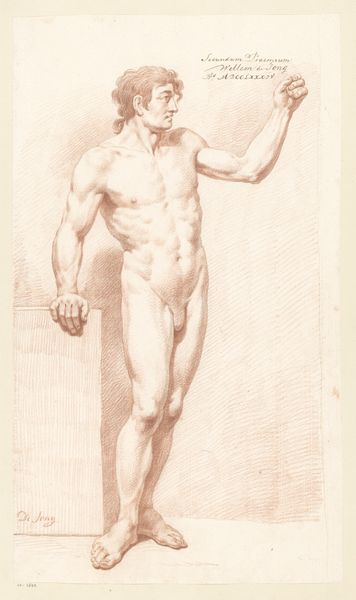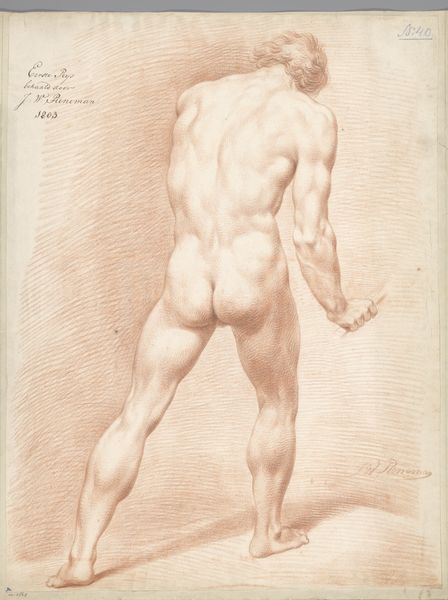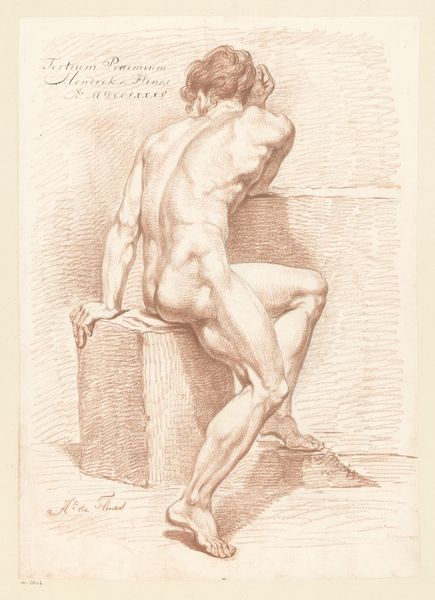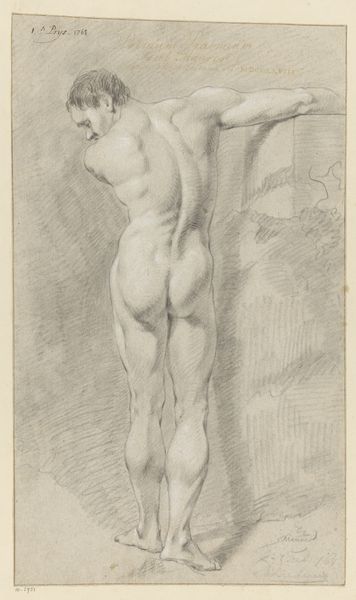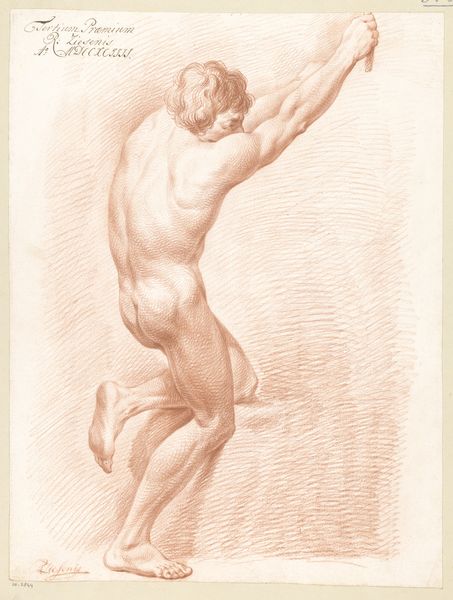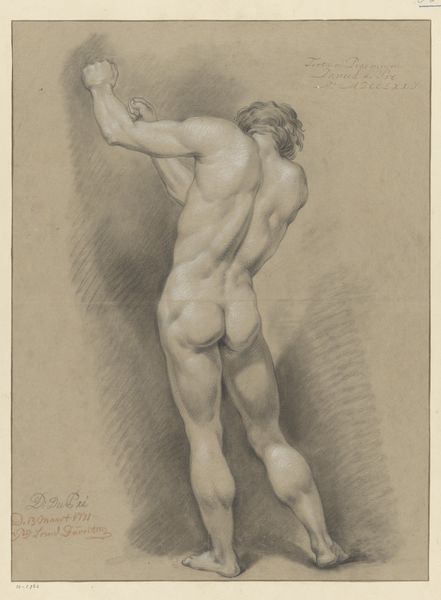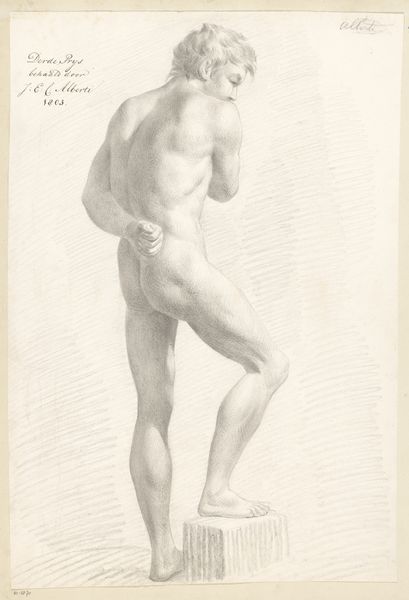
drawing, graphite
#
drawing
#
neoclacissism
#
figuration
#
pencil drawing
#
graphite
#
academic-art
#
nude
Dimensions: height 520 mm, width 371 mm
Copyright: Rijks Museum: Open Domain
C. Courier made this nude male drawing in 1802, which won first prize. The male nude has a long history in Western art, often referencing classical ideals of beauty, strength, and heroism. In the late 18th and early 19th centuries, such depictions also functioned within a very specific cultural context. Academies across Europe promoted the study of the nude male figure as essential training for artists, reinforcing a gendered hierarchy where male bodies were the standard of aesthetic value. What does it mean to revisit these images today, when we are so much more attuned to issues of representation and power? Consider the gaze through which such images were created and viewed, a gaze often rooted in a white, male, and heteronormative perspective. This challenges us to question whose bodies are valorized and why. Does the image evoke a sense of admiration, or perhaps discomfort, as we consider its place within a complex history of art and representation?
Comments
No comments
Be the first to comment and join the conversation on the ultimate creative platform.



